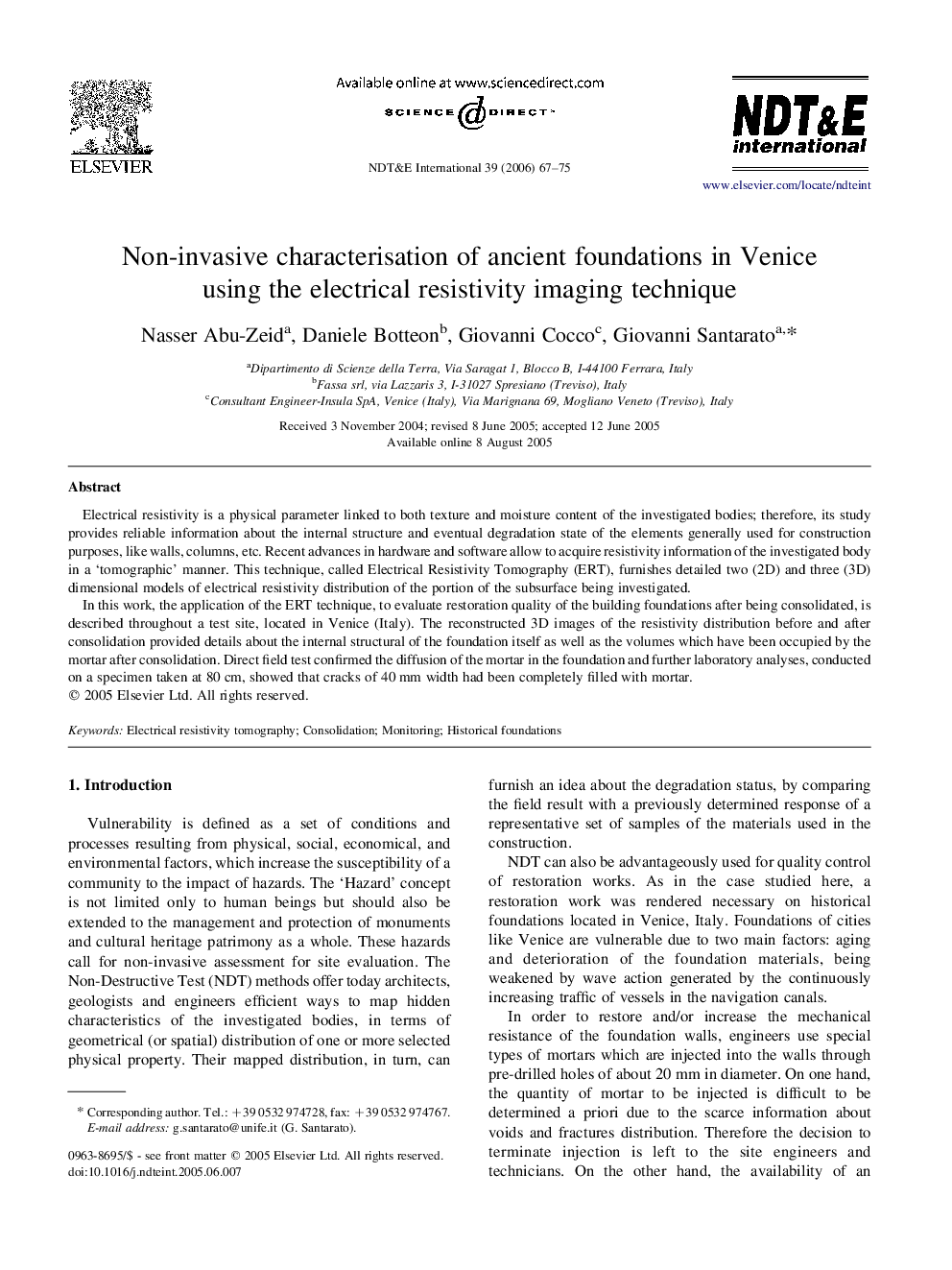| Article ID | Journal | Published Year | Pages | File Type |
|---|---|---|---|---|
| 295911 | NDT & E International | 2006 | 9 Pages |
Electrical resistivity is a physical parameter linked to both texture and moisture content of the investigated bodies; therefore, its study provides reliable information about the internal structure and eventual degradation state of the elements generally used for construction purposes, like walls, columns, etc. Recent advances in hardware and software allow to acquire resistivity information of the investigated body in a ‘tomographic’ manner. This technique, called Electrical Resistivity Tomography (ERT), furnishes detailed two (2D) and three (3D) dimensional models of electrical resistivity distribution of the portion of the subsurface being investigated.In this work, the application of the ERT technique, to evaluate restoration quality of the building foundations after being consolidated, is described throughout a test site, located in Venice (Italy). The reconstructed 3D images of the resistivity distribution before and after consolidation provided details about the internal structural of the foundation itself as well as the volumes which have been occupied by the mortar after consolidation. Direct field test confirmed the diffusion of the mortar in the foundation and further laboratory analyses, conducted on a specimen taken at 80 cm, showed that cracks of 40 mm width had been completely filled with mortar.
